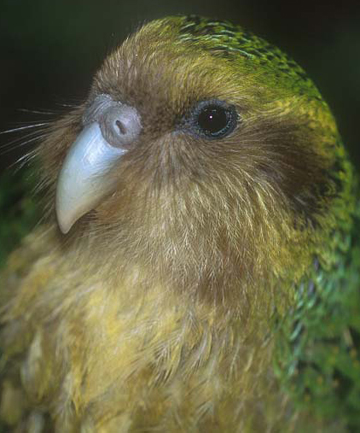 "SURPRISING" DISCOVERY: Researchers have found that kakapo may be able to pollinate wood rose, an endemic New Zealand plant.Researchers are hoping to pollinate one of the country's threatened plants with the critically endangered kakapo.
"SURPRISING" DISCOVERY: Researchers have found that kakapo may be able to pollinate wood rose, an endemic New Zealand plant.Researchers are hoping to pollinate one of the country's threatened plants with the critically endangered kakapo.
Landcare Research palaeoecologist Janet Wilmshurst said Landcare Research, the Department of Conservation and the University of Adelaide had made a ''surprising'' discovery while analysing 1000-year-old fossilised dung from the kakapo, a rare flightless parrot.
The dung, found near Nelson, contained high concentrations of dactylanthus pollen, or wood rose, an endemic New Zealand plant that parasitises the roots of native trees.
Wilmshurst said the rare wood rose was threatened by forest clearance and introduced mammals, especially possums and ship rats.
''It's a snapshot of the past, of a former ecological system.''
She said the endangered New Zealand lesser short-tailed bat was the only known native pollinator of wood rose, but this discovery meant it was possible the kakapo could be too.
Lead researcher Jamie Wood said the finding showed kakapo, and potentially other nectar-drinking birds, had fed on the wood rose flowers may have acted as pollinators.
''It also represents the southernmost record of dactylanthus and extends the known pre-settlement range of the species by approximately 50 kilometres further south,'' Wood said.
Wilmhurst said eight kakapo were this year transferred to Little Barrier Island, where the wood rose was also found.
She hoped this relationship between them would be restored.
DOC plans to use cameras to observe whether kakapo, or any other nectar-drinking birds, effectively pollinate the wood rose.
In the study, published in the Conservation Biology journal oday, the authors discuss how dung can provide a tool for detecting past ecological relationships between species that, because of population declines, no longer occur.